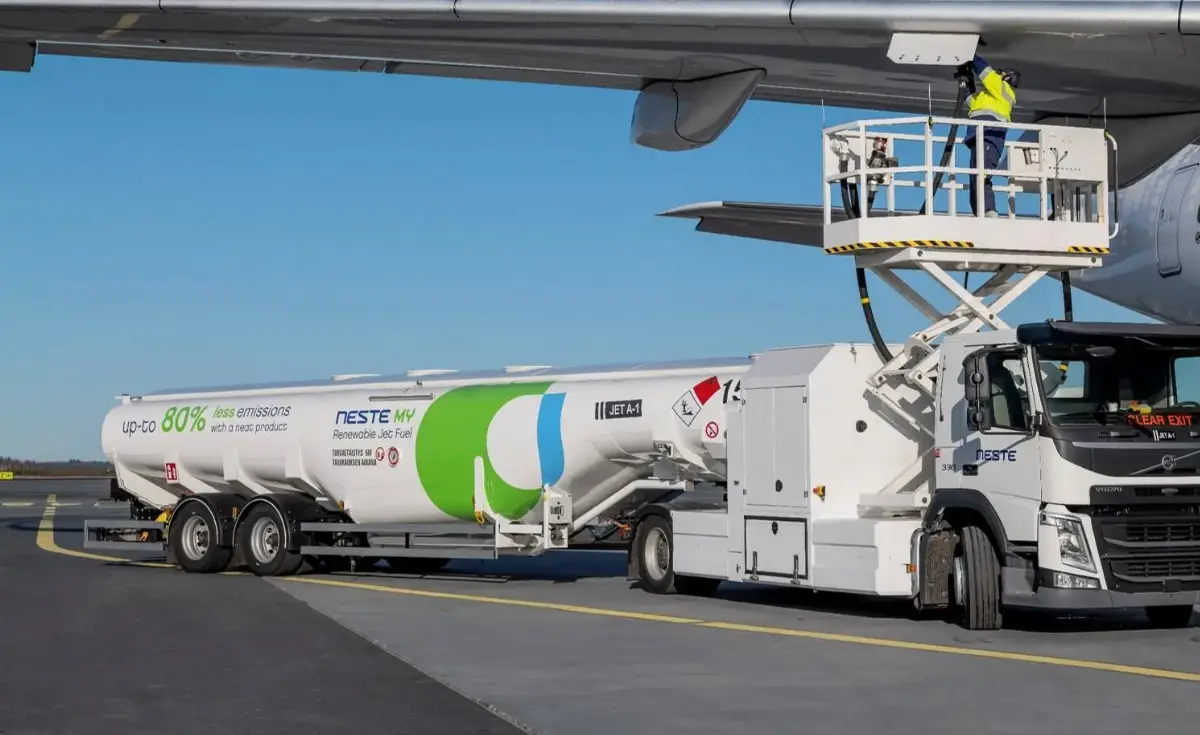
SAF production set for continued growth
But needs policy support to diversify sources of production

The International Air Transport Association (IATA) announced its expectation for overall renewable fuel production to reach an estimated capacity of at least 69 billion liters (55 million tonnes) by 2028. Sustainable Aviation Fuels (SAF) will comprise a portion of this growing output which is being achieved through new renewable fuel refineries and the expansion of existing facilities. Importantly, the expected production has a wide geographic footprint covering North America, Europe and Asia Pacific.
Trends supporting this optimistic outlook are already visible. In 2022, SAF production tripled to some 300 million liters (240,000 tonnes) and project announcements for potential SAF producers are rapidly growing. IATA counts over 130 relevant renewable fuel projects announced by more than 85 producers across 30 countries. Each of these projects has either announced the intent or commitment to produce SAF within their wider product slate of renewable fuels. Typically, there is a 3 –5-year lag between a project announcement and its commercialization date. This implies that further renewable fuel capacity out until 2030 could still be announced over the following years.
If renewable energy production reaches 69 billion liters by 2028 as estimated, the trajectory to 100 billion liters (80 million tonnes) by 2030 would be on track. If just 30% of that produced SAF, the industry could achieve 30 billion liters (24 million tonnes) of SAF production by 2030.
Policy Support & Government Investment
The case for diversification, within current sustainability criteria, is clear. At present, it is expected that 85% of future SAF volume over the next five years will be derived from just one of nine certified pathways, being Hydrotreated Esters and Fatty Acids (HEFA), which is dependent on limited availability of feedstock such as waste fat, oil and grease feedstocks (FOGs, recognized by industry as second-generation feedstock).
IATA identifies three main avenues to achieve SAF diversification:
Scale already certified SAF pathways, such as Alcohol-to-Jet (AtJ) & Fischer-Tropsch (FT);
Accelerated R&D for SAF production pathways that are currently in development;
Scale up of feedstock/feedstock conversion technology.
Accelerating these avenues to commercialized levels will require policy leadership from governments. To start, there is an impending need for the harmonization of core SAF policies, as a means of reducing administrative, logistical and geographic barriers to entry for new market entrants, including producers, feedstock providers, and offtakers.
More fundamentally, the challenge is finding the capital needed to fund the development of new technology and production facilities. Governments must look at the broader sustainability picture with these investments. SAF can be produced from surplus forestry and agricultural residues, municipal solid waste, food waste and wet wastes (third generation feedstocks). Producing SAF from these can create long-term return on investment opportunities for governments, with the potential of financing the clean-up of the environment, supporting developing economies and delivering a future-proofed intersection of energy transition and energy security.
Passenger Support
A recent IATA survey revealed significant public support for SAF. Some 85% of travelers agreed that governments should provide incentives for airlines to use SAF.
AVIONEWS - World Aeronautical Press Agency